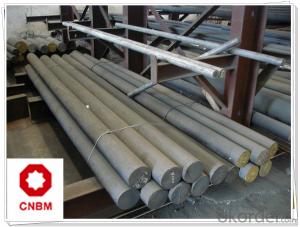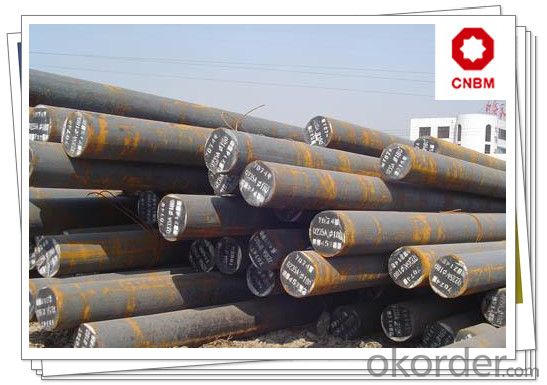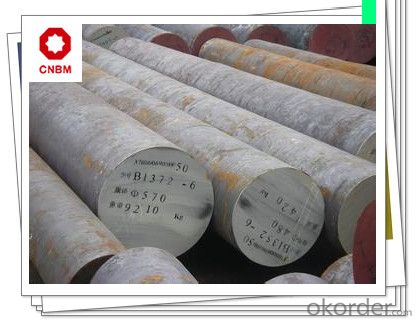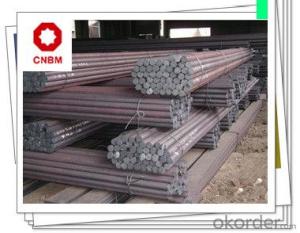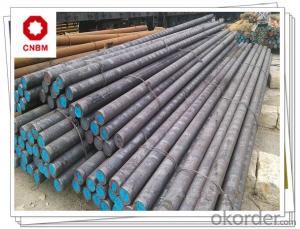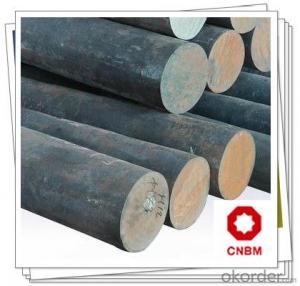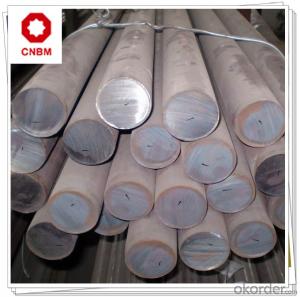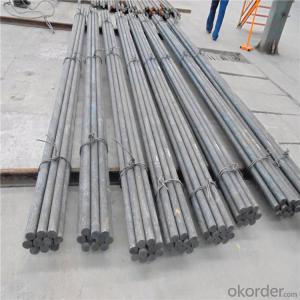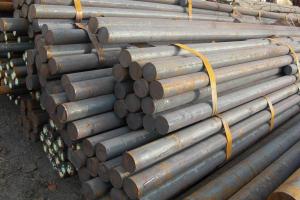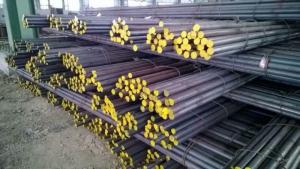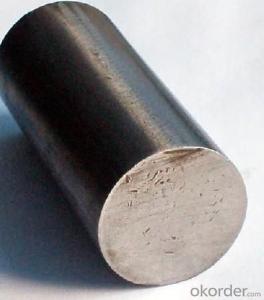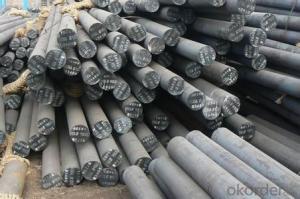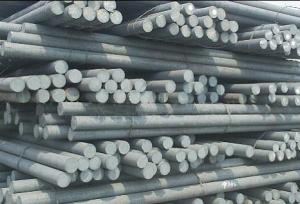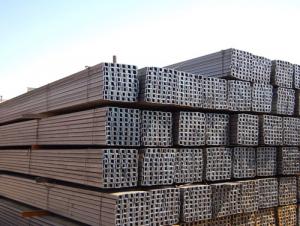Hot Rolled Carbon Steel Round Bars S50C
- Loading Port:
- Shanghai
- Payment Terms:
- TT OR LC
- Min Order Qty:
- 50 m.t.
- Supply Capability:
- 120000 m.t./month
OKorder Service Pledge
OKorder Financial Service
You Might Also Like
Hot Rolled Carbon Steel Round Bars S50C
Product Specification
1, Chemical Composition %
| Grade | C | Si | Mn | S | P | Cr | Ni | Cu |
| S50C | 0.47-0.53 | 0.15-0.35 | 0.60-0.90 | ≤0.035 | ≤0.030 | ≤0.20 | ≤0.20 | ≤0.30 |
2, Mechanical Properties
| Strength of Extension σb | Yield Strength σs | Reduction of Area ψ | Elogation δ5 | Hardness |
| ≥630(64) Mpa | ≥375(38) Mpa | ≥40% | ≥14% | ≤241HB |
3, Diameter: 16mm - 300mm
Length: Max 12m
Application
1, Used as base plate of cold working die.
2, Used as fix plate of drill jig.
3, Used as standard template material.
Product Main Points
1, Heat Treatment: normalizing, annealing, tempering, quenching
2, Surface Treatment: black, grinding, bright, polish
3, Product Process: hot rolled, cold drawn, forged
FAQ
1, Payment Terms:
30% T/T deposit & 70% T/T before delivery.
Irrevocable L/C at sight
2, Trade Terms:
EXW, FOB, CIF, CNF
3, Delivery Time:
Normally 30-40 days. According to quantity.
4, Manufacture or Trading Company:
CNBM is a state-owned fortune global 500 trading company. We have intergrated supply system.
There are about 20 overseas locations in different countries.
Product Show
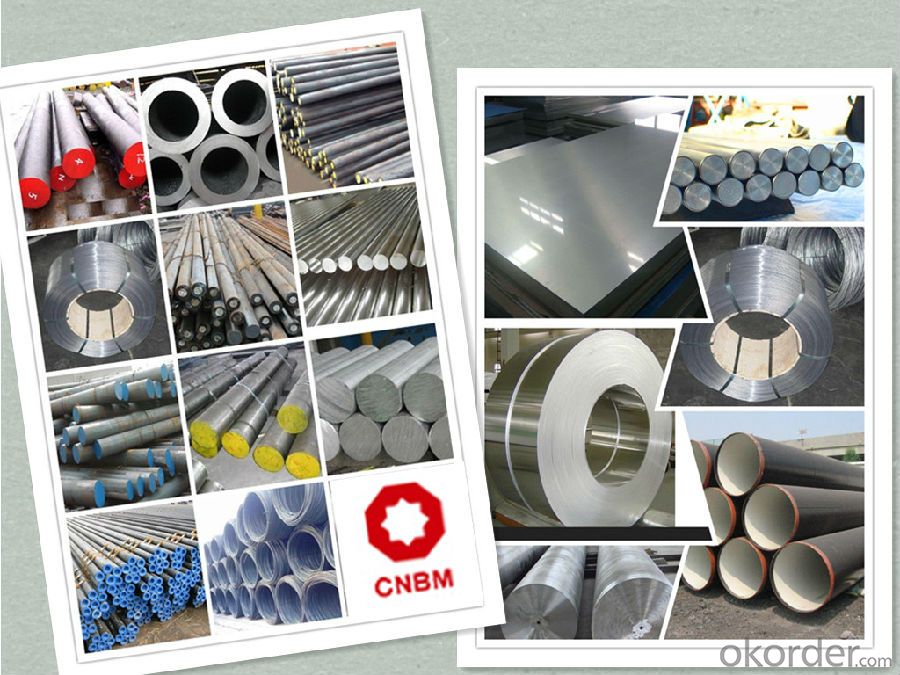
Work Shop
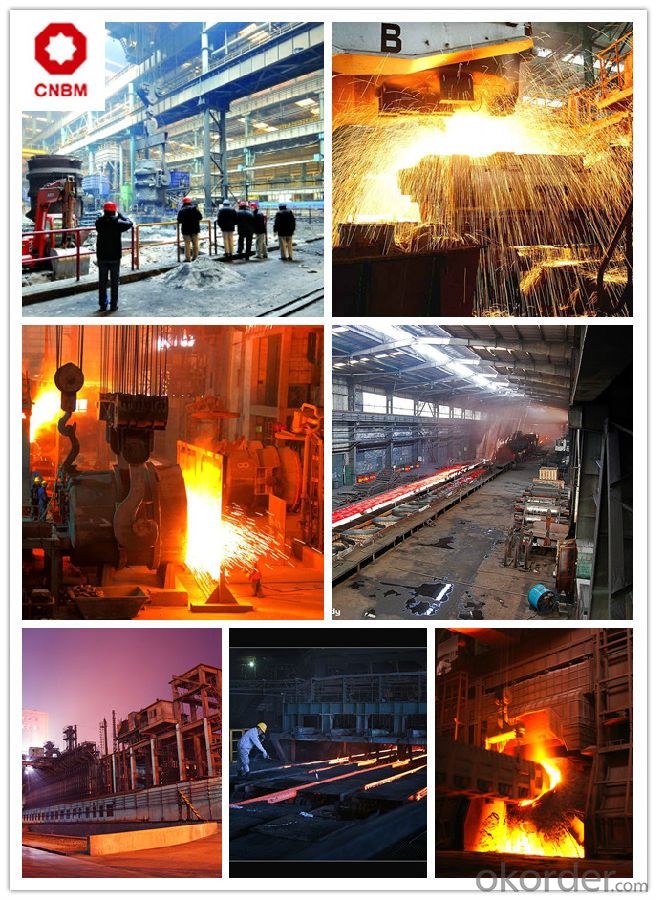
About Us

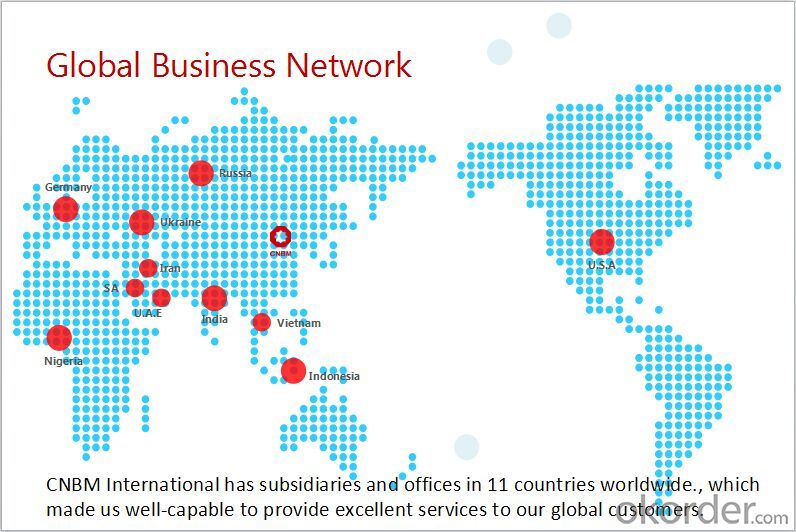
- Q: What is the difference between a rough turned and a hot rolled steel round bar?
- The manufacturing processes and resulting properties of a rough turned steel round bar and a hot rolled steel round bar differ. To produce a rough turned steel round bar, a steel billet or ingot is heated to a high temperature and then subjected to rough machining processes. This involves removing excess material from the surface to achieve the desired size and shape. The result is a slightly smoother surface compared to the hot rolled bar, although there may still be some minor imperfections. Rough turned bars are often used when a smoother surface finish is required, such as in machining operations. On the other hand, a hot rolled steel round bar is manufactured by heating a steel billet or ingot to extremely high temperatures and passing it through a series of rolling mills. This hot rolling process involves compressing the steel bar between rotating rolls, which reduces the thickness and increases the length. As a result, hot rolled bars have a rough, scaled surface with variations in diameter along their length. This textured surface provides excellent adherence for paint, coatings, or further processing. Hot rolled bars are commonly used in construction, manufacturing, and structural applications where mechanical properties like strength and durability are important. To summarize, the main difference between a rough turned and a hot rolled steel round bar lies in their manufacturing processes and surface finish. Rough turned bars undergo rough machining for a smoother surface, while hot rolled bars are formed through high-temperature rolling, resulting in a rough, scaled surface. The choice between these two types of bars depends on the specific application and the desired properties, such as surface finish, strength, and adherence.
- Q: Can steel round bars be coated for added protection?
- Yes, steel round bars can be coated for added protection. Coating them with materials like epoxy, zinc, or other corrosion-resistant substances can help prevent rusting, extend their lifespan, and enhance their resistance to various environmental factors.
- Q: What is the difference between a hot-rolled and a forged steel round bar?
- The main difference between a hot-rolled and a forged steel round bar lies in the manufacturing process. Hot-rolled steel bars are produced by heating a billet or ingot and then rolling it into the desired shape, resulting in a smooth surface and consistent dimensions. On the other hand, forged steel round bars are formed through the application of high pressure and localized heating, which creates a stronger and more durable product. Due to the forging process, forged steel round bars often have a rougher surface texture but possess superior mechanical properties compared to hot-rolled steel bars.
- Q: What are the different grades of stainless steel round bars for marine applications?
- For marine applications, stainless steel round bars come in various grades. The commonly used grades are 304, 316, and 316L stainless steel. Grade 304 stainless steel is a versatile alloy known for its good corrosion resistance, high strength, and excellent formability. It is often utilized in marine applications that require moderate corrosion resistance. Grade 316 stainless steel is similar to grade 304 but contains additional molybdenum. This enhances its corrosion resistance, especially against chlorides and other aggressive marine environments. Grade 316 is preferred in marine settings that demand increased resistance to corrosion. Grade 316L stainless steel is a low carbon version of grade 316. Its resistance to sensitization and intergranular corrosion is further improved. This makes it highly suitable for marine applications that involve welding, reducing the risk of corrosion at the welds. Apart from these grades, there are specialized stainless steel alloys like duplex stainless steel. These alloys combine the advantages of austenitic and ferritic stainless steels, offering even greater corrosion resistance and strength. They are suitable for demanding marine applications. When choosing stainless steel round bars for marine applications, it is crucial to consider specific environmental conditions such as exposure to saltwater, chemicals, or high temperatures. Seeking guidance from a materials specialist or referring to industry standards can help ensure the appropriate grade is selected for the specific marine application.
- Q: Can steel round bars be used in the construction of buildings?
- Indeed, the utilization of steel round bars is viable in the erection of edifices. In the realm of construction, steel round bars are widely employed as reinforcement within concrete frameworks, specifically in columns, beams, and slabs. Their inclusion imparts heightened robustness and stability to the structure, augmenting its resilience against various loads and forces. Notably, the circular configuration of these bars facilitates effortless bending and molding, thereby rendering them versatile and adaptable for diverse construction applications. What's more, steel round bars are renowned for their exceptional tensile strength, durability, and resistance to corrosion, rendering them an optimal choice for enduring and dependable building construction projects.
- Q: What is the difference between hot rolled and cold rolled steel round bars?
- Hot rolled and cold rolled steel round bars differ in their production process and resulting characteristics. Hot rolled steel round bars are made by heating billets or ingots to a high temperature and then shaping them into the desired form using rolling mills. This process results in a scaled surface and a relatively rough texture. Hot rolled steel round bars have a wider tolerance and are not as precise in terms of their dimensions. They are generally used in applications where precision is not critical, such as construction and general manufacturing. On the other hand, cold rolled steel round bars are manufactured by cooling down hot rolled steel to room temperature and then further processing it through cold rolling mills. This process results in a smoother surface and a more precise dimension. Cold rolled steel round bars have a tighter tolerance and are commonly used in applications where precision is crucial, such as automotive components, machinery parts, and tools. In terms of mechanical properties, hot rolled steel round bars generally have a lower tensile strength and yield strength compared to cold rolled steel round bars. Cold rolled steel also tends to have a higher hardness and a more uniform grain structure, which can enhance its strength and durability. Overall, the main difference between hot rolled and cold rolled steel round bars lies in their production process, surface finish, dimensional accuracy, and mechanical properties. The choice between the two depends on the specific requirements of the application and the desired characteristics of the end product.
- Q: What are the advantages of using nickel-iron alloy steel round bars?
- Nickel-iron alloy steel round bars offer several advantages. Firstly, they exhibit excellent corrosion resistance, making them suitable for applications in harsh environments. Additionally, these bars possess high mechanical strength and toughness, allowing them to withstand heavy loads and impacts. They also have good thermal stability, making them ideal for use in high-temperature applications. Moreover, nickel-iron alloy steel round bars have good magnetic properties, making them suitable for use in electromagnetic applications. Overall, the combination of corrosion resistance, mechanical strength, thermal stability, and magnetic properties make nickel-iron alloy steel round bars advantageous in various industrial applications.
- Q: What are the different types of steel used for round bars?
- There are several different types of steel used for round bars, including carbon steel, alloy steel, stainless steel, and tool steel. Each type has its own unique composition and properties, making them suitable for various applications and industries.
- Q: What are the different standards for steel round bars?
- There are several different standards for steel round bars, including ASTM A36, ASTM A105, ASTM A276, ASTM A479, and ASTM A572. These standards outline the specific requirements for the chemical composition, mechanical properties, and dimensions of steel round bars for various applications.
- Q: Can steel round bars be used in high temperature applications?
- Yes, steel round bars can be used in high temperature applications. Steel is known for its excellent strength and durability, even at high temperatures. However, the specific type of steel and its composition should be considered to ensure it is suitable for the particular high temperature environment and application. Additionally, proper heat treatment and other measures may be necessary to enhance the steel's resistance to high temperatures and prevent any potential degradation or failure.
Send your message to us
Hot Rolled Carbon Steel Round Bars S50C
- Loading Port:
- Shanghai
- Payment Terms:
- TT OR LC
- Min Order Qty:
- 50 m.t.
- Supply Capability:
- 120000 m.t./month
OKorder Service Pledge
OKorder Financial Service
Similar products
Hot products
Hot Searches
Related keywords
